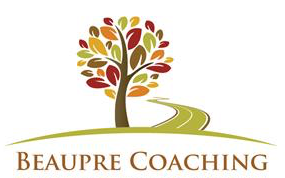“Inside Out” – The value and perils of Sadness
/I was so excited to finally see the new Disney-Pixar film, Inside Out. I loved the concept as it was revealed in the promos, and the cast couldn’t be beat. I was like a little kid entering the theater, getting my 3D glasses on, selecting my bottle of water, and finding a good seat. As a reminder for you film buffs: Joy is voiced by Amy Poehler, Anger by Lewis Black, Fear by Bill Hader, Disgust by Mindy Kaling and Sadness by Phyllis Smith.
Inside Out makes visible a story, a parable from one point of view of what is happening inside our brains. The world Pete Docter created had a purpose, to entertain and to get it right. In an interview with Terry Gross (NPR), he said that he wanted to share how his daughter went from being a goofy, high energy, little kid to being much more kind of quiet and laid back older child. In the film we see Reilly go from bright, engaged, and fun-loving to a sullen, angry 11 year old. There are hundreds of theories on childhood development and thousands of books (a search on Amazon revealed 45,217) and this film adds to that body of work, with lots of humor and silliness thrown in. The film is beautifully shot (it is Pixar, after all!) and Amy Poehler is such a joy that to be in her presence even as an animated figure – or maybe because of the freedom of animation -- touched me on a visceral and imaginative plane. When she twirled with excitement at her great new idea, I was smiling from ear to ear and felt a lift in my body. The characters of Fear, Sadness, Anger and Disgust are played to hysterical perfection.
The points the movie made for me were 1) the value of sadness, 2) the gift of imagination, and 3) the perfect synergy of all our emotions help us move through life. This little post is about the value and perils of Sadness.
As a survivor of child sexual abuse, emotions were a dangerous part of my life. They arose of their own accord and could unknowingly reveal the secret of what was happening when no one was looking. This revelation was not safe. I wasn’t sure why, but I was sure it wasn’t safe. The world of emotions could take you down. Too angry, too happy, too scared – it all seemed like playing Russian roulette. Don’t think I grew up in an unloving home. I grew up in a loving home; yet even in a loving home my childhood was violated and I could not allow my emotions to surface.
Inside Out poses the value of sadness. Reilly is forced to leave her full and loving world in Michigan to the streets of San Francisco and her fear, isolation, and loneliness invite Sadness to take over and permeate her current experiences. Her memories of wellbeing are forgotten. Reilly no longer has access to her sense of security from family or safety with friends; without safety her expression of silliness and even her physical abilities are diminished. Here lies the peril of Sadness.
Joy which was the prominent feeling in her pre-move life and had the most influence was working hard to keep all the emotions from taking over Reilly’s thoughts; she was losing the battle. Then through observation and awareness, Joy learned that Sadness could be useful. When Reilly’s imaginary friend, Bongo, was immobilized by his own sadness, crying his candy tears, Sadness listened and comforted him. After a good cry, Bongo was ready to move and take action. Joy became aware that when sadness was expressed, acknowledged, comforted the truth of the moment it could transform. The strength taken from comfort was transformative and led back to the feeling of security and joy and lead to action. What a beautiful lesson that I know to be true in my life today.
But it certainly was not true for me when I was a child and this is where the beautiful lesson of Inside Out takes a turn. Many survivors of child sexual abuse were not able to tell a soul what was happening. Survivors may have shown their sadness and sadness may have been met with anger and a dismissive attitude. “I’ll give you something to cry about.” That was a common response from my mom. I know now, it was not out of wanting to do harm, but just wanting me to SHUT UP! Being abandoned by my father, the man she adored, while she was pregnant and raising 2 other babies on her own was pretty stressful. No, showing Sadness did not get comfort and healing. It created a pain point for her and for me. So I became expert at hiding all my emotions throughout my childhood. It was the fertile ground where child sexual abuse occurred.
Today, I am an observer of my own inner life. I invite my emotions into a conversation to find out what messages they are trying to tell me. I allow them with a curiosity and with Inside Out, I can also visualize them in a less threatening way. Today my brain is not a hidden, shame-filled place. It is no longer filled with self-inflicted pain and fears of being hurt and abandoned. If I am hurt, I can choose to feel Sadness and sometimes it is the salve to help me accept a difficult situation, a death, a break-up. Today with the help of Inside Out, I remember the value of Sadness and vulnerability and it not as scary as Fear, Anger or Disgust makes it out to be. It makes for much Joy!
What do you do when you are sad? Can you let someone know? Can you be vulnerable and allow your feelings to be transformative?

